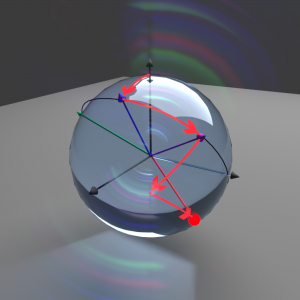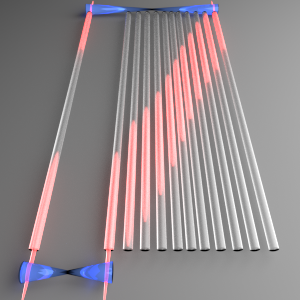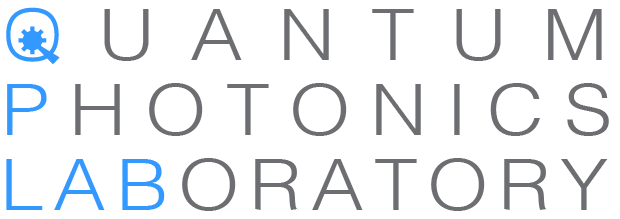Welcome to the Quantum Photonics Laboratory!
We are an experimental group at RMIT University’s School of Engineering. Our research spans from engineering photonic quantum information and communication technologies to studying quantum effects in biological, chemical and physical systems.
RECENT NEWS
QPLab Secures ARC Funding for Centre of Excellence in 2017
 The ARC’s seven-year budget will support nine new Centres of Excellence, which involve significant collaboration between universities, publicly funded research organisations, other research bodies, governments and businesses.The aim, according to the ARC, is to undertake highly innovative and potentially transformational research with the aim of achieving international standing and a significant advancement of capabilities and knowledge.
The ARC’s seven-year budget will support nine new Centres of Excellence, which involve significant collaboration between universities, publicly funded research organisations, other research bodies, governments and businesses.The aim, according to the ARC, is to undertake highly innovative and potentially transformational research with the aim of achieving international standing and a significant advancement of capabilities and knowledge.
RMIT researchers are chief investigators, leading collaboration across multiple universities, in three successful bids. Dr Alberto Peruzzo (School of Engineering) and Dr Nicolas Menicucci (School of Science) have secured funds for a new round of the Centre for Quantum Computation and Communication Technology. This centre will receive $33.7 million to implement quantum processors able to run error corrected algorithms and transfer information across networks with absolute security. The new technology is expected to provide a strategic advantage in a world where information security is of paramount importance.
Self-guided quantum tomography published in Physical Review Letters
 In this paper we report on the experimental demonstration of self-guided quantum tomography—a first of its kind iterative method to characterize quantum systems—and show its superior performance and robustness over standard quantum tomography in several photonic one- and two-qubit experiments. Standard quantum tomography requires storing and post-processing data from an exponentially large number of measurements, making this technique inapplicable for quantum states being prepared today. Moreover, it lacks robustness against inevitable statistical noise and measurement errors.
In this paper we report on the experimental demonstration of self-guided quantum tomography—a first of its kind iterative method to characterize quantum systems—and show its superior performance and robustness over standard quantum tomography in several photonic one- and two-qubit experiments. Standard quantum tomography requires storing and post-processing data from an exponentially large number of measurements, making this technique inapplicable for quantum states being prepared today. Moreover, it lacks robustness against inevitable statistical noise and measurement errors.
By iteratively learning the quantum state through a stochastic optimization algorithm, self-guided quantum tomography is far more resource efficient—thus can be applied to larger systems—and achieves higher accuracy thanks to its robustness against statistical noise and measurement errors.
Self-guided quantum tomography will likely be soon necessary in quantum experiments where standard quantum tomography is already unfeasible. Applications of the algorithm outside quantum tomography include state preparation and quantum device control. As automation will be critical for future quantum technologies, our demonstration takes an important step towards practical realization of autonomous learning.
Quantum state transfer published in Nature Communications
 In an international collaboration between the Quantum Photonics Laboratory at RMIT, the Politecnico di Milano and the South University of Science and Technology of China, we have demonstrated, for the first time the perfect state transfer of an entangled quantum bit (qubit) on an integrated photonic device.
In an international collaboration between the Quantum Photonics Laboratory at RMIT, the Politecnico di Milano and the South University of Science and Technology of China, we have demonstrated, for the first time the perfect state transfer of an entangled quantum bit (qubit) on an integrated photonic device.
The ability of information transfer is at the heart of every information processing system, from global satellite communication to biological neural networks. Likewise, quantum technologies require high fidelity routing of quantum information between different locations of a quantum processor and quantum communication nodes. Due to the long-standing challenge of preserving extremely fragile quantum correlation, despite numerous theoretical proposals, to date, the perfect state transfer protocol has not been experimentally realized on quantum bits of information. In this work we report the first demonstration of perfect state transfer protocol.
Using the state-of-the-art three-dimensional direct-write waveguide technology, we fabricated an integrated waveguide array with a specific design, showing the capability of high fidelity transfer of quantum states.
We anticipate that our realisation of the perfect state transfer protocol has direct applications in many areas, including quantum transport, quantum simulation, entanglement preparation and distribution, and qubit interconnection for quantum computation. These applications may induce fundamental changes in the way we design the infrastructure of the next-generation quantum information processing devices, saving more space and allowing more automation.
